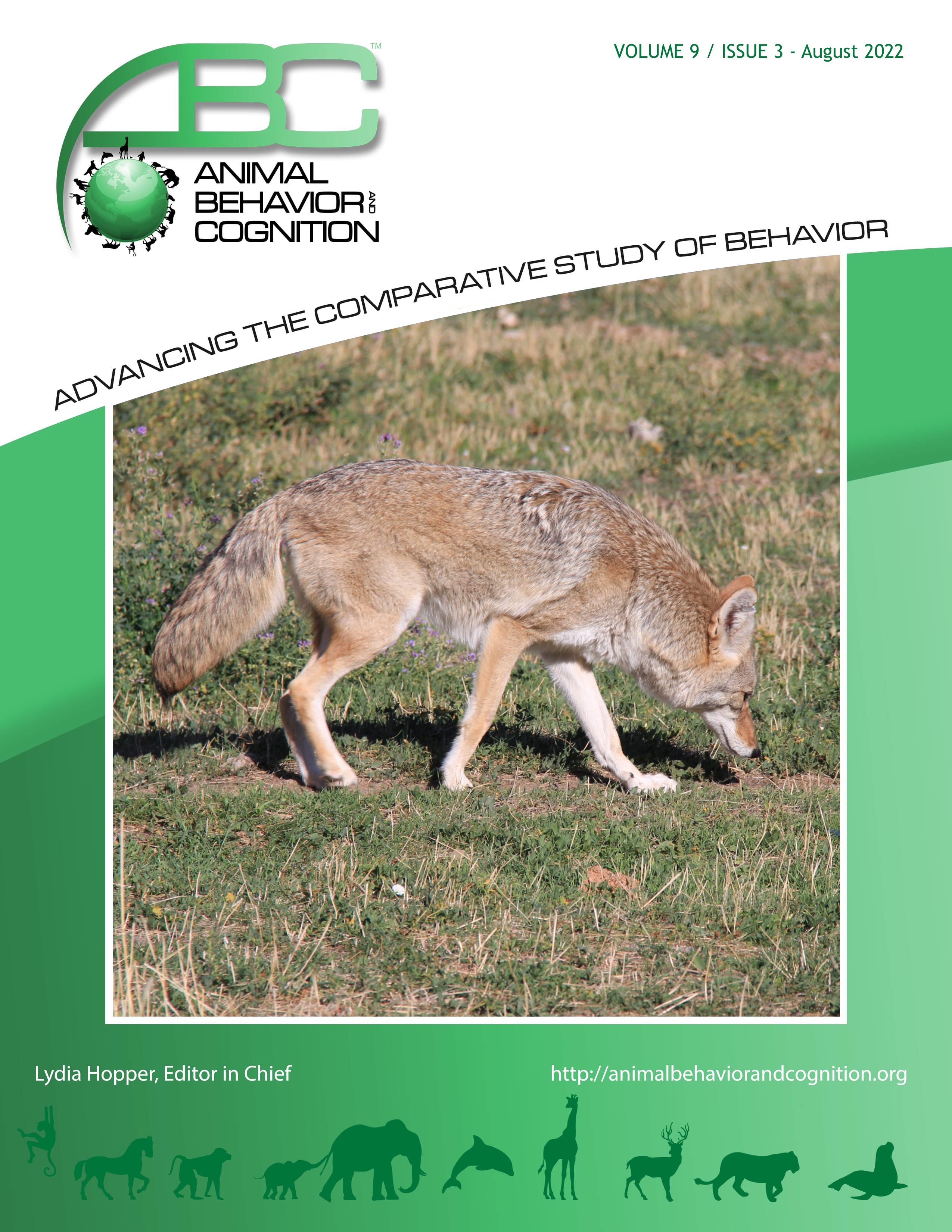Vol 9, Issue 3, August 2022
Discrimination of High- and Low-Threat Vocalizations: An Examination of Referential Communication in Black-Capped Chickadee (Poecile atricapillus) Mobbing Calls
Citation
Congdon, J. V., Hahn, A. H., Campbell, K. A., Scully, E. N., Mischler, S. K., Montenegro, C., Service, W. D., & Sturdy, C. B. (2022). Discrimination of high- and low-threat vocalizations: An examination of referential communication in black-capped chickadee (Poecile atricapillus) mobbing calls. Animal Behavior and Cognition, 9(3), 298-315. https://doi.org/10.26451/abc.09.03.04.2022
Abstract
Referential communication has been defined as the exchange of information regarding an object or event, but few studies have examined referential alarm calls in songbirds. In contrast, it has been well-supported that chickadees produce mobbing calls in response to predators that vary depending on the threat level posed, and the auditory brain areas of chickadees produce similar neural expression in response to predator calls and conspecific mobbing calls of the same threat level. This suggests that chickadees perceive these acoustically distinct vocalizations as similar, potentially as referent signals. In the current study, we trained 33 birds on an operant go/no-go discrimination task in which chickadees were presented with predator and mobbing calls of high- or low-threat. Following the first round of training, birds completed a second round with high- or low-threat calls and we predicted that birds would show transfer of training when contingencies (i.e., threat level regarding a species of predator) were the same between hetero- and conspecific vocalizations. However, high- and low-threat mobbing calls were not treated similarly to the corresponding predator’s calls. Our asymmetrical results may be due to the acoustic distinction between calls produced by two owl predator species, but we cannot make definitive conclusions about referential communication from this study. Nonetheless, we believe that this experiment was an important exploration of the perception of referential signal.
Keywords
Referential communication, Predator perception, Black-capped chickadee, Operant conditioning
